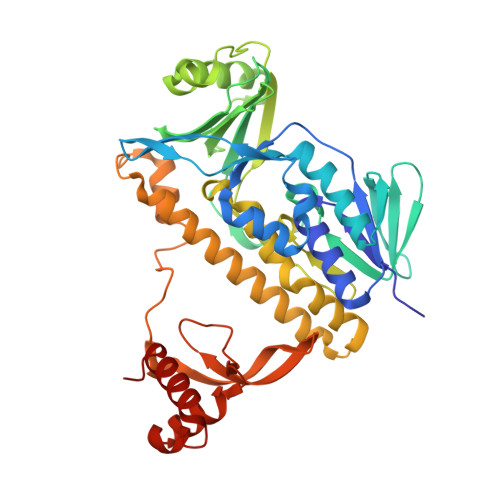Functional and structural characterization of a flavoprotein monooxygenase essential for biogenesis of tryptophylquinone cofactor.
Oozeki, T., Nakai, T., Kozakai, K., Okamoto, K., Kuroda, S., Kobayashi, K., Tanizawa, K., Okajima, T.(2021) Nat Commun 12: 933-933
- PubMed: 33568660
- DOI: https://doi.org/10.1038/s41467-021-21200-9
- Primary Citation of Related Structures:
7CTQ - PubMed Abstract:
Bioconversion of peptidyl amino acids into enzyme cofactors is an important post-translational modification. Here, we report a flavoprotein, essential for biosynthesis of a protein-derived quinone cofactor, cysteine tryptophylquinone, contained in a widely distributed bacterial enzyme, quinohemoprotein amine dehydrogenase. The purified flavoprotein catalyzes the single-turnover dihydroxylation of the tryptophylquinone-precursor, tryptophan, in the protein substrate containing triple intra-peptidyl crosslinks that are pre-formed by a radical S-adenosylmethionine enzyme within the ternary complex of these proteins. Crystal structure of the peptidyl tryptophan dihydroxylase reveals a large pocket that may dock the protein substrate with the bound flavin adenine dinucleotide situated close to the precursor tryptophan. Based on the enzyme-protein substrate docking model, we propose a chemical reaction mechanism of peptidyl tryptophan dihydroxylation catalyzed by the flavoprotein monooxygenase. The diversity of the tryptophylquinone-generating systems suggests convergent evolution of the peptidyl tryptophan-derived cofactors in different proteins.
Organizational Affiliation:
Institute of Scientific and Industrial Research, Osaka University, Osaka, Japan.

















